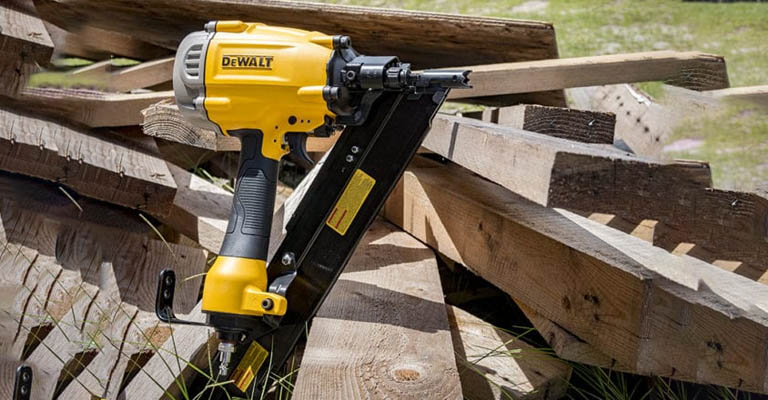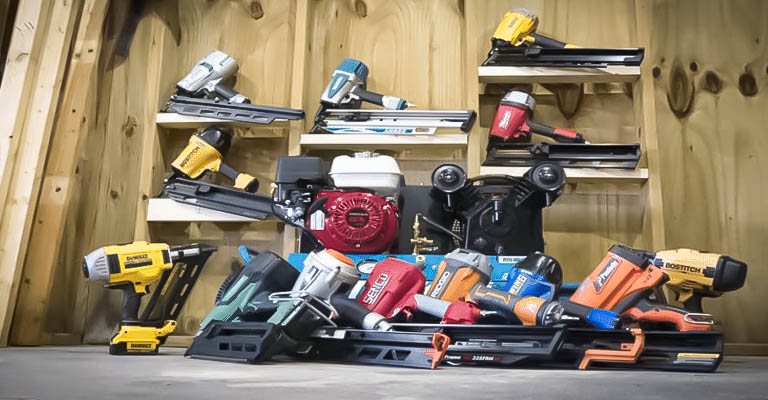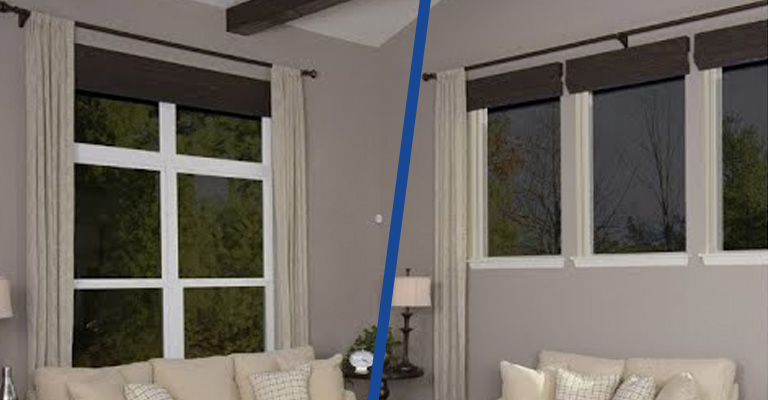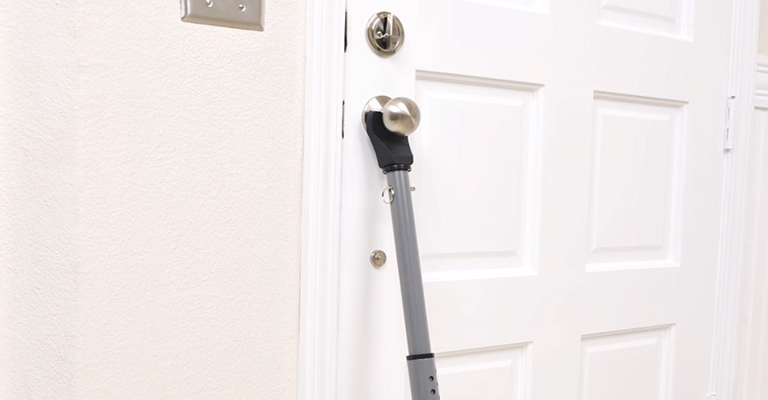Can I Use 30 Degree Nails In A 34 Degree Nailer?
30-degree framers are most commonly used in the framing process. They are marketed to contractors and homeowners who want to do their work.
34-degree framers are more popular in the construction industry because they offer better precision than 30-degree models. They are typically used by professional contractors or for high-end jobs like residential or commercial construction.
There are many different types of nailers that are available in the market. The 34- degree nailer has a 30-degree firing angle which makes it popular among users.
Now, the question is, can I use 30-degree nails in a 34-degree nailer?
Yes, you can fire 30-degree nails using a 34-degree nailer. However, it’s best not to try using any other type of nailer than what the manufacturer recommends – there’s no point in wasting time with one that was not made for the job at hand.
Let’s Start With Some Geometry
A framing nailer is built with an angle in its magazine, and it will only take nails corresponding to that angle. Presently, straight framing nail clips have four angles: 21°, 28°, 30°, and 34°.
There are many different types of nail clips, such as length, gauge, and even material type. However, the most important thing to remember is that you can only use 21-degree nail clips with 21-degree nailers.

Furthermore, each angle of framing nail clips is attached by a different type of material that offers advantages and disadvantages in terms of speed and capacity.
15 degrees framing nail gun that accepts only coiled magazines further complicates things. Coils of these nails usually hold 200-300 framing nails at 15 degrees and can last for almost the entire day on a construction site.
30- and 34-Degree Framing Nailers
Nailers like these are often found on construction sites and give you the most cutting edge in tight spaces. The nail strips can be filled with 80 nails each and hold two full strips of nails.
A strong paper tape holds these clips together, which leaves less mess on job sites and makes them easier to use in tight areas. The downside of any nail gun is its weight. There are more nails, so it’s heavier.
The straight clip nailers are the heaviest and will require considerable upper body strength over the course of a full day.
28-Degree Framing Nailers
Having a similar low angle and collated nails attached to a wire strip, the 28-degree framing nailer can handle nearly twice as many nails and has a similar low angle.
These nail guns are able to fire three different nail styles since the nails can be packed tightly together: offset heads, clipped heads, and fully round heads.
However, the wire clip and increased capacity come at the expense of weight. Typically, a fully loaded 21-degree gun weighs slightly more than this one
21-Degree Framing Nailers
The low angle allows for easy work in small spaces, and these nailers are capable of driving round head nails. As the 21-degree nails are driven, plastic clips are used to hold them together.
You should wear safety glasses when using this kind of gun since it ejects pieces of plastic at a high speed while you work. In addition to the low capacity per clip, 21-degree nails also have a low degree of flexibility.
For larger projects, you can expect to reload the clip more frequently since it can hold only about 60 nails. These nail guns have the advantage of being light and extremely portable despite their small capacities.
15-Degree Framing Nailer
In addition to its massive coil of nearly 300 nails, the 15-degree nail gun uses a powerful welding rod. Despite their great benefits, these are extremely heavy, which means they are not suitable for use in building foundations.
You might be turned back by the weight of the huge roll of nails, not to mention its cost. In addition to the guns, the nails are also extremely expensive. The nail gun is definitely a good choice if you’re determined to build your cabin in the woods alone.

How Do I Know What Size Nail To Use?
This is a common question that comes up time and time again for both amateurs and professionals. If you want to get the best results, you should choose the size of the nail that is recommended by the manufacturer of your nail gun.
If you’re planning on making a DIY project, then go with the smaller gauge – it will be easier to insert into your project. If you’re planning on buying a new nail gun, then go with the bigger gauge – it will give you more power when driving nails into wood or other materials.
Small nail guns are meant for small or light-duty jobs like trimming trees, hanging lights or pictures, installing shelves, etc., but they are not meant for heavy-duty jobs like construction or remodeling.
Nail guns are traditionally used with nails that are 2.5 inches long. However, since nails can vary in size, it is hard to give a definitive answer on the right nail size for any given project.
The ideal nail should be made of high-quality steel and offer a smooth operation and quality finish. If you prefer wood, then use a hammer to drive the nail into place.

What About Framing Photos?
Most people have a favorite way of framing a photo. For some people, it’s an old-school rectangular frame or a 20-degree picture frame. Other people prefer to use a more modern 34-degree framing nailer, which is the most popular framing nailer available on the market today.
The 34-degree framers are more efficient and less time-consuming than the 30-degree framers. With these types of framers, you can create a more professional look for your photos in less time and with less effort.
Along with that, they offer the convenience of use and efficiency of space because they provide two nails per setup rather than one with traditional framing nailers.
Final Words
Nails range from 0 to 34 degrees. The 34-degree clip head is typically used by manufacturers such as Paslode, Senco, Hitachi, and others. It seems that many nail brands don’t mention the angle, but rather the name of the gun.
Non-branded nail guns have a hard time competing with branded ones. If the nails are aligned with the barrel, take the protractor into the store, and measure the angle of the nails.






